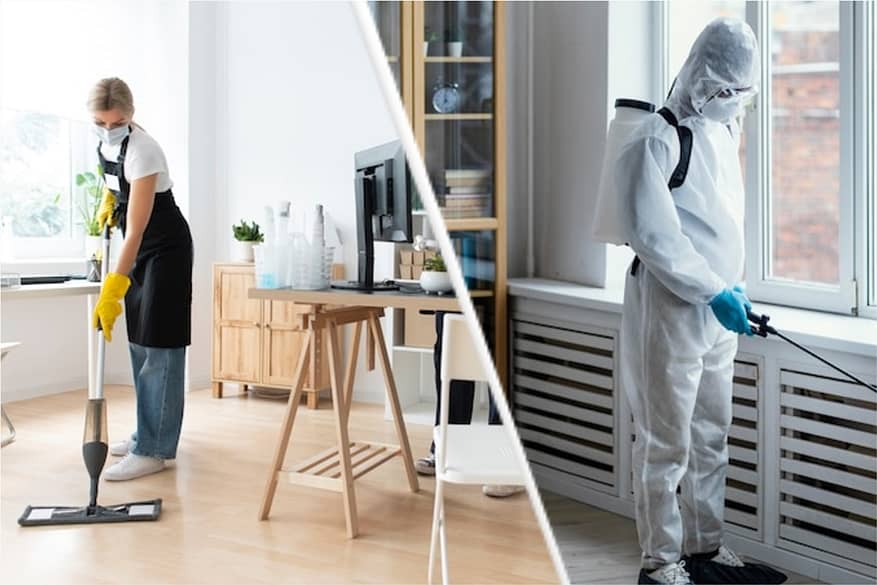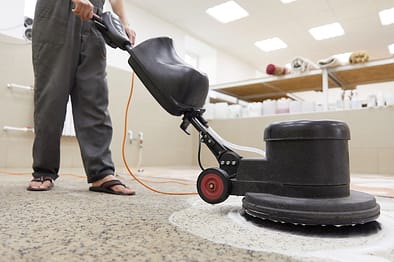What is the Difference Between Cleaning and Disinfecting?
Most of us use these terms interchangeably, but they are far from the same. So, what exactly is the difference between cleaning and disinfecting? Cleaning refers to the removal of dirt and allergens from a surface. Products that clean vs. disinfect are surfactant based. Surfactant is a compound that interacts with water to break down and remove soil, a.k.a. anything that makes an object or surface dirty such as dirt, oil, food, etc.
Disinfectants on the other hand are used to destroy bacteria. A fun fact that most people do not know is that disinfectants are pesticides. Do not let this scare you. There are a lot of negative associations linked to pesticides, but there are many different types. Disinfectants happen to be one classification that controls germs and microbes such as bacteria and viruses. Both cleaning and disinfecting are required for maintaining a medical facility. Clean first, then disinfect.
Checklist for Touchpoints
To ensure that every inch of an exam room is getting the proper cleaning and disinfecting, it is important to have a checklist that is ready to go and easy to reference. Even the tiniest details need to be accounted for. For example, a quality check performed on fifty-five rooms at Summit Health Hospital in Pennsylvania uncovered the presence of Adenosine triphosphate (ATP), the indicator for the presence of biological residues.
You may be thinking that this is the result of carelessness, but the on-site environmental services team used a 175-item checklist as a guide for their terminal room cleaning. So, what could they have missed? The list included dry-erase boards used in hospitals for communication but did not include dry-erase markers and erasers. Out of the fifty-five rooms, thirty-nine makers and fifty-two erasers evaluated forty times the threshold for biological residues.
We will not bore you with a 200-item checklist, but the following items must be sterilized using EPA-approved, hospital-grade disinfectants:
Top, front, sides of a bed’s headboard, mattress, bed frame, footboards, side rails, and between side rails
All high-touch areas in the room including tabletops, bedside tabletop, inner drawer, phone and cradle, armchairs, door, and cabinet handle, room sink, handles and faucet, light switches, closet handle, IV pole (grab area), IV pump control, room doorknob/plate,
TV remote
Nurse call device and cord
This list is in no way comprehensive because every room/medical center is different, but it covers the basics. In addition to cleaning the above items, environmental service cleaning staff should also clean and sanitize the walls, ceilings, and bathrooms. Remember, all patient care equipment that is reusable needs to be sterilized. Any items that are removed from the room must be disinfected before they are returned. In addition to making sure exam rooms are clean and disinfected, you also want to strive for welcoming entrances and waiting rooms, disinfected restrooms, sparkling surfaces, and floors, and deep-cleaned carpets.
Why Should You Outsource Your Medical Cleaning?
There are a few key reasons why you should outsource your medical cleaning:
Professional cleaning services have qualified EVS directors familiar with government healthcare regulations.
Cleaning processes and procedures are up-to-date due to ongoing staff education.
A guaranteed level of cost saving. (PTO, worker’s comp, HR, and the costs of hiring and firing)
Professional services come with the leading equipment and product quality.
Your medical facility will remain inspection ready.
Hiring a commercial cleaning service like TechniClean, that will clean your facility the right way will help you keep your medical center healthy and get the patient satisfaction scores you want. It will also allow you to narrow your focus on patient care and safety. Cleaning is not one size fits all. Every medical center is different. Yours requires services that are catered to your exact needs.



